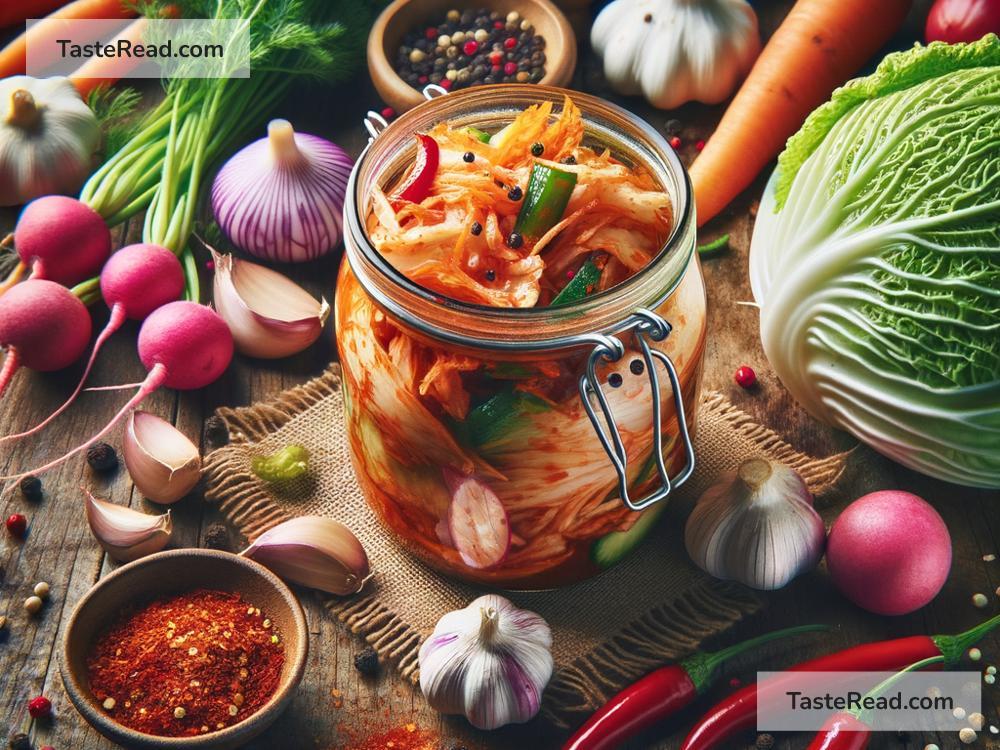How Fermentation Alters the Taste of Vegetables Like Kimchi
Have you ever tasted kimchi and wondered how plain vegetables can transform into such a flavorful, tangy, and spicy dish? The secret lies in fermentation—an ancient food preservation process that’s been captivating taste buds for centuries. But what exactly happens during fermentation? How does it change the taste of vegetables? Let’s dive into the fascinating world of fermentation and explore how it works its magic on vegetables like kimchi.
What is Fermentation?
Fermentation is a natural process where microorganisms, such as bacteria and yeast, break down sugars and starches in food. In the case of kimchi, the main microorganism involved is Lactobacillus, a type of lactic acid bacteria. These bacteria thrive in an oxygen-free environment and produce lactic acid as a byproduct. This acid is the key to fermentation—it’s what alters the texture, taste, and aroma of the vegetables.
Fermentation has been used for thousands of years to preserve food and make it tastier. Other familiar fermented foods include yogurt, sauerkraut, kefir, miso, and sourdough bread. It’s not only a practical method for extending the shelf life of food but also a way to create new, exciting flavors and boost nutrition.
The Ingredients in Kimchi
Kimchi is a traditional Korean dish made by fermenting vegetables, typically napa cabbage and radish. It’s seasoned with a blend of chili powder, garlic, ginger, green onions, and sometimes fish sauce or salted shrimp. These spices contribute to kimchi’s bold flavor, but it’s fermentation that truly transforms the dish into something special.
How Fermentation Changes Taste
Here’s where the magic happens. When you mix the vegetables with salt and pack them tightly into a container, the beneficial Lactobacillus bacteria begin their work. Let’s break down step-by-step how fermentation alters the taste of vegetables like kimchi:
-
Salting the Vegetables
The first step in kimchi-making involves salting the vegetables. Salt draws water out of the cabbage and radishes, making them softer and crunchier. It also creates an environment where harmful bacteria can’t grow, allowing the good bacteria (Lactobacillus) to thrive. Salt plays a critical role in kick-starting the fermentation process. -
Breaking Down Sugars
Vegetables naturally contain sugars and carbohydrates. During fermentation, Lactobacillus bacteria feed on these sugars. As the bacteria digest the sugars, they produce lactic acid, carbon dioxide, and other compounds. This process changes the chemical structure of the vegetables, gradually shifting their flavor from fresh and grassy to tangy, sour, and complex. -
Creating Sour Notes
The lactic acid generated by the bacteria is responsible for kimchi’s signature sourness. Acidic environments not only make the food safe to eat by preventing the growth of harmful microbes but also give fermented foods their distinct tangy flavor. In the case of kimchi, the sourness becomes more pronounced the longer it ferments. -
Enhancing Umami
Kimchi isn’t just sour—it’s also packed with umami, the savory taste often described as “mouthwatering.” Umami flavors come from compounds created during fermentation, such as amino acids and peptides released as the vegetables break down. Additionally, ingredients like fish sauce or salted shrimp in kimchi amplify the umami-rich profile. -
Combining Spices and Aromas
Fermentation doesn’t work in isolation; it interacts with the spices you add to the vegetables. Garlic, chili powder, ginger, and green onions undergo slight changes during fermentation, further blending their flavors into the mixture. Fermentation intensifies the heat of chili and deepens the earthy, slightly sweet notes of garlic and ginger, resulting in a rich and well-balanced flavor. -
Evolving Over Time
One of the fascinating things about fermentation is that the taste continues to evolve. Freshly fermented kimchi is relatively mild, with a crisp texture and subtle sourness. Over weeks or months, as fermentation progresses, the flavors become stronger, deeper, and more layered. This makes kimchi a versatile food because you can enjoy it at different stages depending on your preferred taste.
Why Fermented Vegetables Taste So Good
There’s a scientific reason fermented vegetables are so appealing—they excite multiple taste sensations. The sourness from lactic acid stimulates your taste buds, balancing out the saltiness and spiciness. The umami adds depth and complexity, while the slight sweetness from the vegetables themselves rounds out the flavors. Together, these elements create a harmonious experience for your palate.
Is Fermentation Healthy?
Absolutely! Fermentation doesn’t just improve flavor; it also boosts the nutritional value of foods. The bacteria involved in the process produce probiotics, which are beneficial for gut health. Eating kimchi and other fermented vegetables can support digestion, strengthen your immune system, and even improve mood. Additionally, fermentation breaks down certain compounds that are hard to digest, making the nutrients in vegetables more bioavailable.
Final Thoughts
Fermentation is nothing short of a culinary superpower—it preserves food, deepens flavors, and enhances nutrition. In the case of kimchi, fermentation turns humble vegetables like cabbage and radish into a dish bursting with tangy, spicy, and savory goodness. Whether you enjoy it freshly made or aged for months, kimchi showcases the transformative power of nature and science working hand in hand.
So next time you take a bite of kimchi, you’ll know the fascinating process behind its bold and complex flavors—the magic of fermentation.


